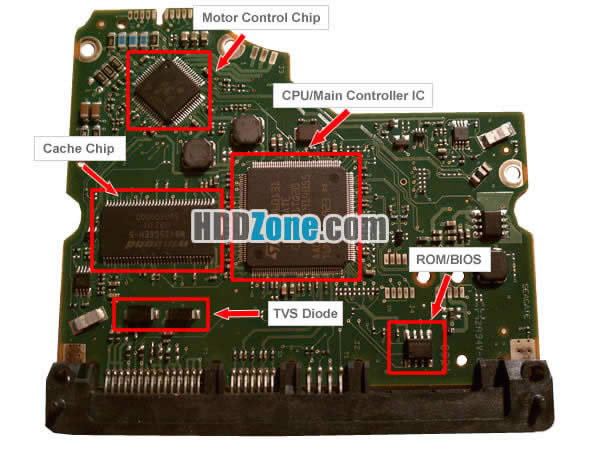A hard drive printed circuit board, commonly known as a PCB, is an essential component of a computer's hard disk drive. It serves as the main interface between the hard drive's mechanical components and the computer's motherboard.

The PCB is responsible for controlling the flow of data to and from the hard drive, as well as managing the drive's power supply. It contains a microcontroller (CPU/Main Controller IC), which is responsible for executing instructions and managing the drive's functions.
The PCB also contains firmware (hard drive pcb firmware transfer), which is a type of software that is permanently stored on the board. The firmware is responsible for controlling the drive's operations, such as reading and writing data.
In addition to its functional purposes, the PCB also serves as a protective layer for the hard drive's delicate components. It shields them from external factors such as dust, moisture, and static electricity.
If a hard drive PCB fails, it can lead to data loss or even render the drive unusable. Therefore, it is essential to handle the PCB with care and avoid exposing it to any potential hazards.
In conclusion, a hard drive PCB plays a crucial role in the proper functioning of a computer's hard disk drive. It serves as the link between the drive's mechanical components and the computer's motherboard, and it also protects the drive's delicate components from external factors.




